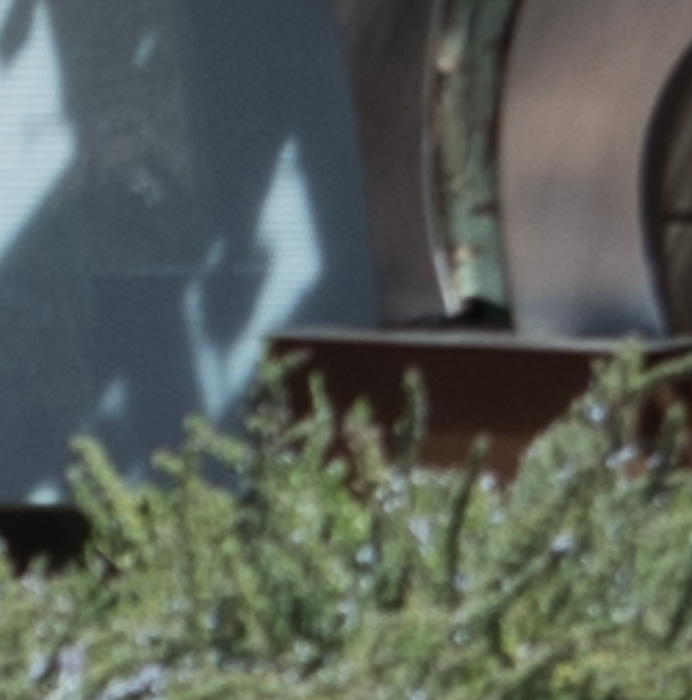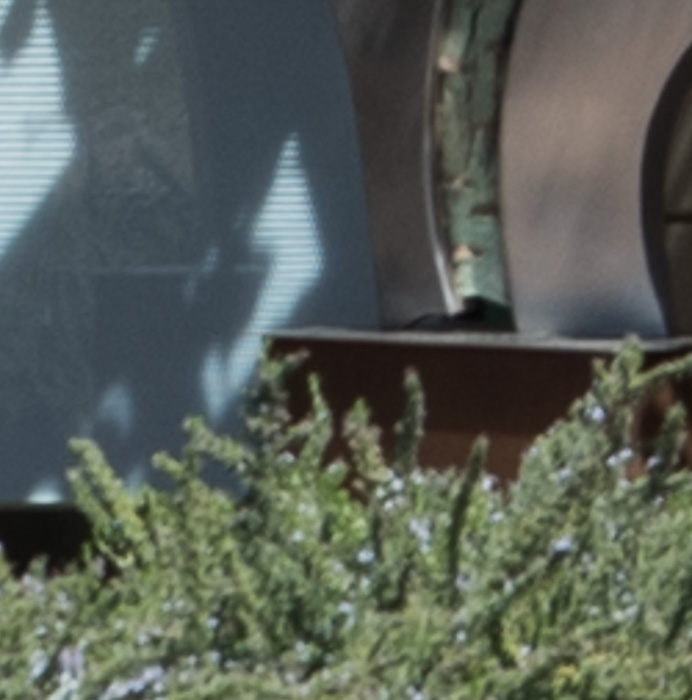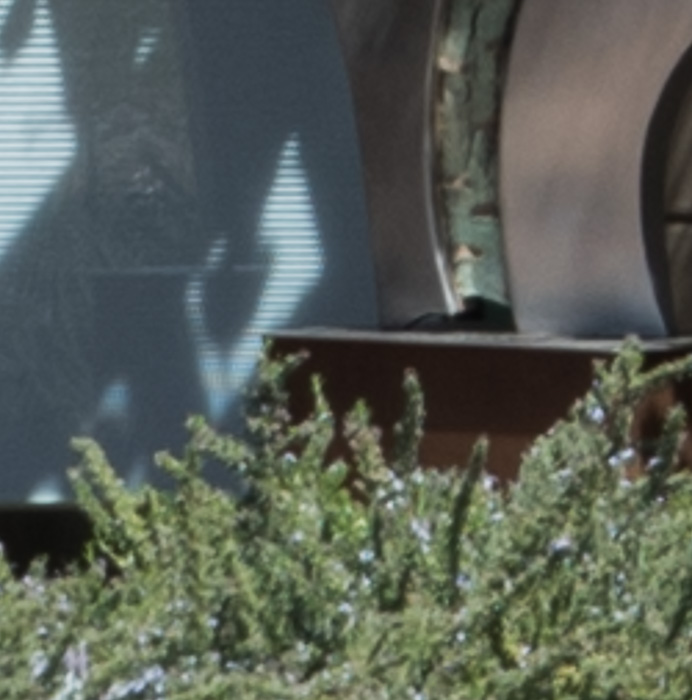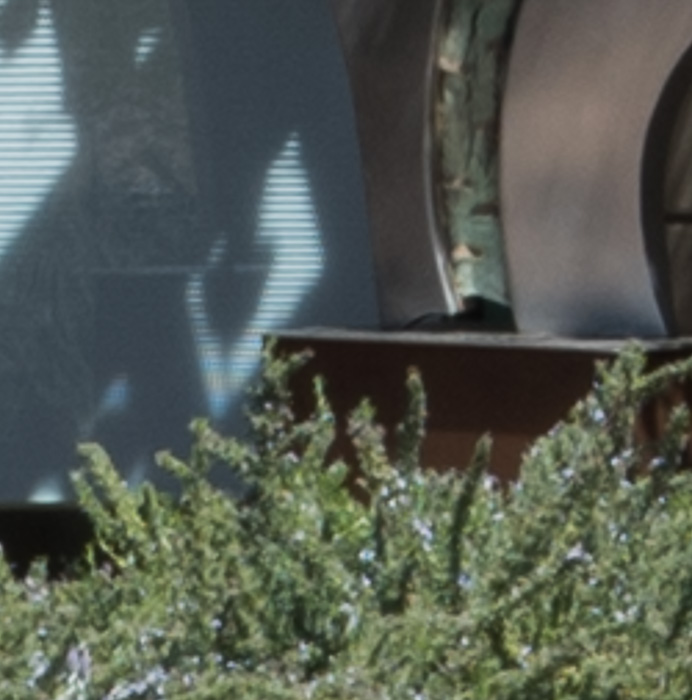A reader suggested that the disappointing showing of the PC-E 24mm f/3.5 Nikkor D ED might have been caused by field curvature. In order to check that out, I made an aperture series focusing in the upper right corner.
The scene:
The upper right corner, blown up 3:1:




Looks a lot better, doesn’t it?
Now let’s look at the center, where I didn’t focus:




Yep. That’s field curvature all right. The center is really fuzzy at f/4, and gets progressively better right through f/11, and it isn’t really crisp even there.
I checked to see if the shift adjustment center marker was off. It was fine. The tilt axis was set up as right/left, so, if the tilt was off, the upper left corner would suffer:




That’s not it. Field curvature it is.
By the way, Roger Cicala has written a nice article on field curvature. Here’s a key quote:
The takeaway message is that stopping down a lens doesn’t flatten the field. You have to stop down enough that the depth of field becomes greater than the curvature.

Thanks Jim! As always, I appreciate your work!
You will remember (via the Sony forum on DPR) that I recently sold my Nikon Kit and replaced it with the A7II.
Long before that sold my PC-E 24. I love landscape and 24mm on FF but was never able to achieve sharp shots( for my expectations ) with it.
It certainly gets mixed reviews. OTOH, I hear the 45 is much better.
Brian